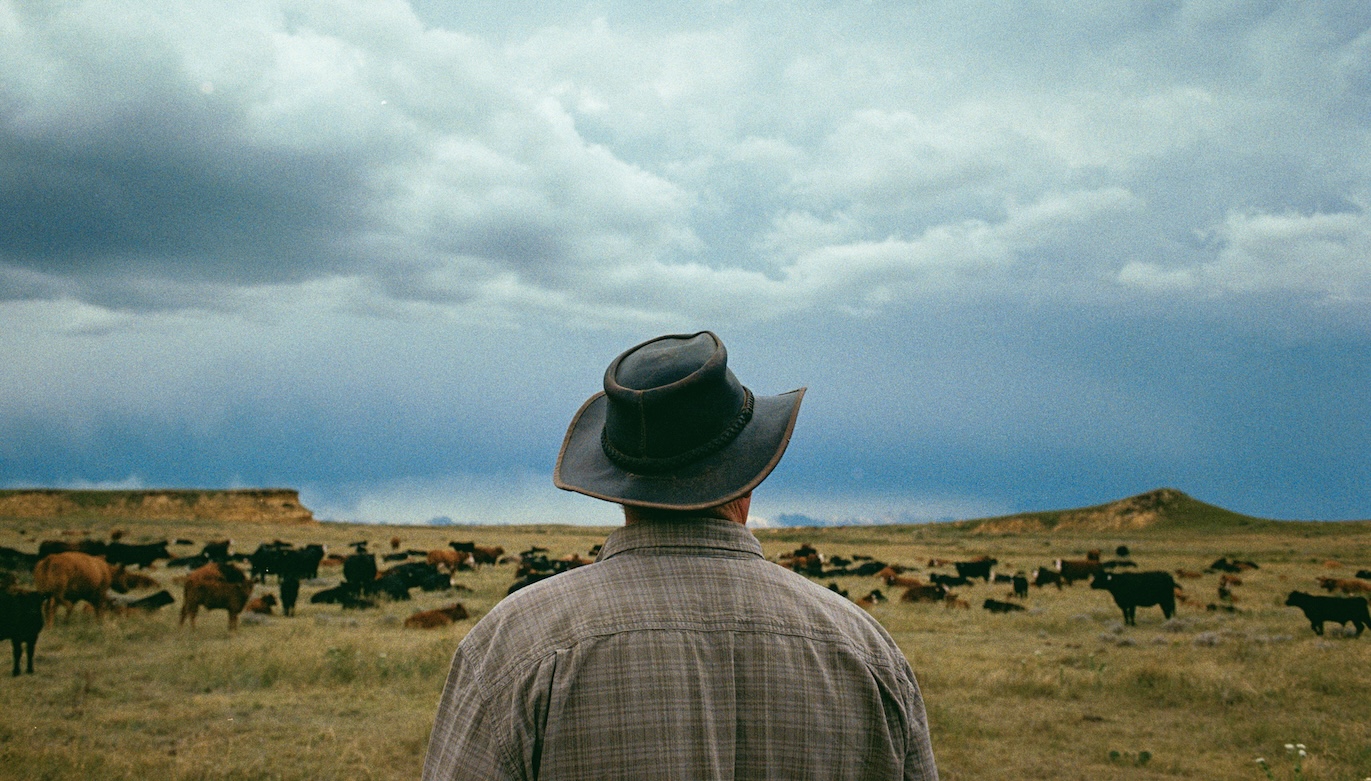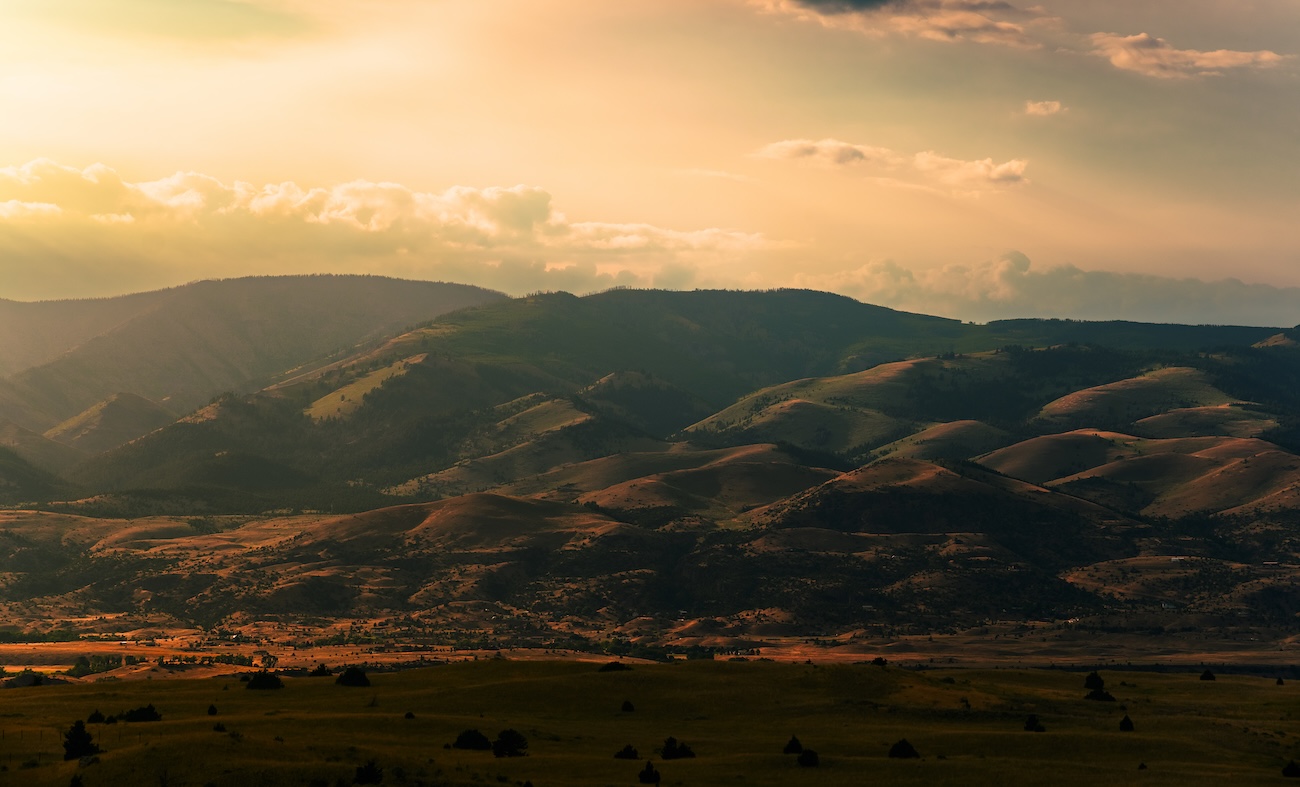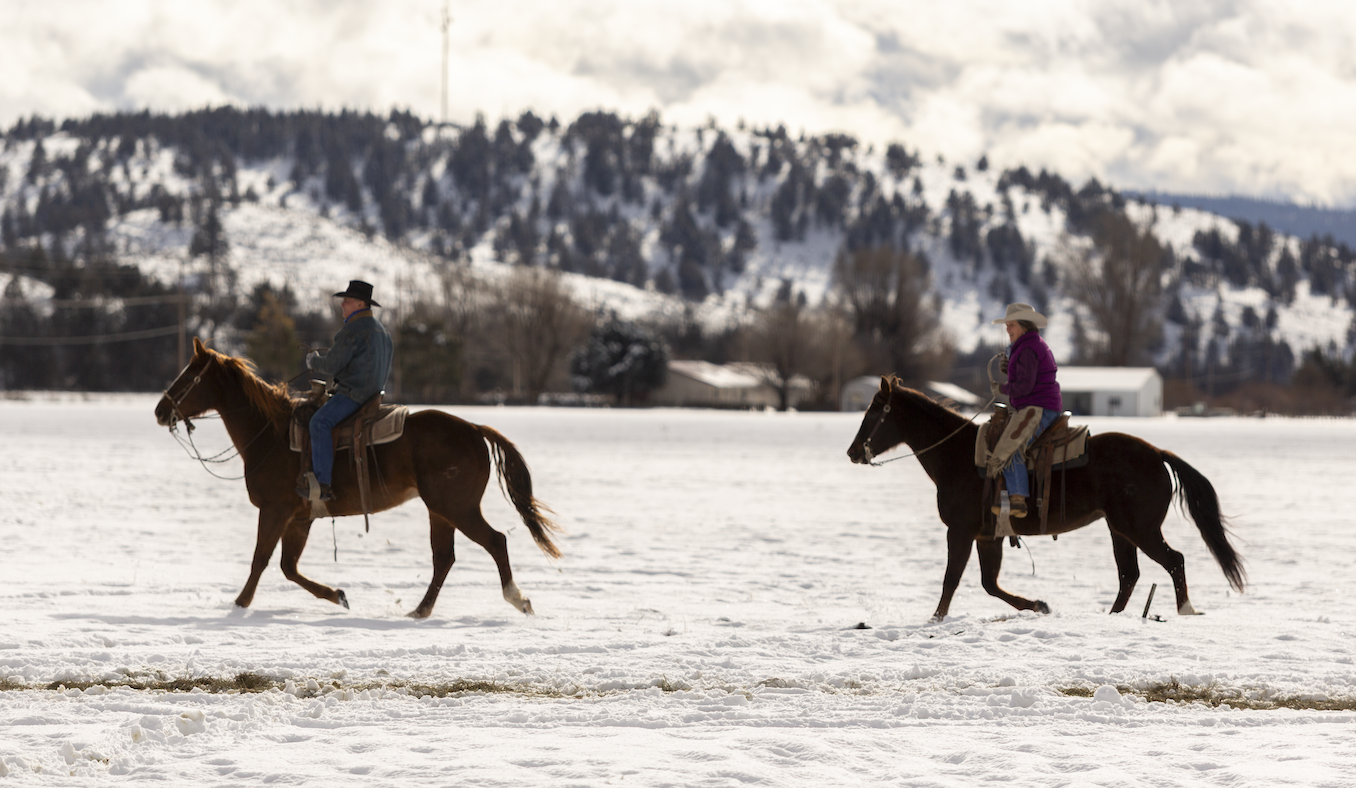Cameron Edwards wakes up with the sun every morning. His land in Logan County, Kansas, stretches over 7,000 acres purchased by his grandfather and great-grandfather. Two of Cameron’s nephews work with him. His sons do, too, when they’re home from college. The family grows corn, ranches cattle, and operates an oil well. Cameron loves it here.
“I wouldn’t want to live anywhere else,” he says. “I hope my grandkids are still on the place.”

Logan County is a rural area in Northwest Kansas with a little over 3,000 residents spread out across 1,000 square miles of plains. It shares a namesake with Washington, DC’s Logan Circle, a dense neighborhood of expensive townhomes near the White House. Both are named for Civil War General John Logan, a congressman who resigned his seat to fight in the Union Army. Other than that shared history, Logan Circle and Logan County are about as different as two places in America could possibly be. One is a brick-and-stone cityscape whose residents work in offices; the other is a grass-and-crops landscape whose residents work on farms and ranches.
Yet federal bureaucrats in DC are controlling what the 3,000 residents of Logan County, including Cameron, can do with their land.
“Somebody in Washington, DC is telling people here how to run cattle or farm,” Cameron says. “And they don’t have any idea. They have no idea whatsoever how to live in Western Kansas. We do. We’ve been doing it for generations.”
The Lesser Prairie-Chicken
There’s a type of bird that sometimes appears in Logan County: the lesser prairie-chicken. It’s a brown-and-white-striped grouse that lives in grassland—like the 3,000 acres of well-maintained grassland on Cameron’s land, where his 160 cattle graze.
“They’re considering the animal over the people who live here.”
Cameron Edwards
“As far as we’re concerned, there’s nothing wrong with the lesser prairie-chicken,” Cameron says. Its presence in Logan County is relatively recent. “We don’t have a lot of them,” he says. As a kid, he never saw lesser prairie-chickens. “They’ve never been a big deal.” His grandfather doesn’t remember seeing them when he bought the property decades ago. The bird’s presence in the grasslands of the county is now welcomed by the family.

The federal government says the lesser prairie-chicken is a “threatened” species. In 2022, the U.S. Fish & Wildlife Service finalized a rule—under section 4(d) of the Endangered Species Act—prohibiting the “take” of the lesser prairie-chicken.
Here’s the problem: By “take,” the government doesn’t just mean removing or killing the bird. Since 1975, the Fish & Wildlife Service and National Marine Fisheries Service (both of which enforce the Endangered Species Act) have adopted a radically broad definition of what it means to “take” an animal. Under this definition (known as the “harm” definition), taking an animal includes activities that might incidentally affect the animal by modifying a habitat where the animal could exist.
So: Using motorized machinery on grassland, installing powerlines, erecting or repairing fences, spraying for weeds, cleaning up trails, and maintaining emergency radio towers for tornado warnings could all be considered “taking” the lesser prairie-chicken—punishable with harsh civil and even criminal penalties.
Cameron heard about the lesser prairie-chicken rule and thought, Here we go again. He’d been annoyed by Fish & Wildlife regulations before, especially in his role as county commissioner. “I’ve had the opportunity to sit face-to-face with Fish & Wildlife people and be lied to right to my face,” he says. He looked at Fish & Wildlife Service maps of the lesser prairie-chicken’s range. “One of the critical areas was right in the middle of our farm,” Cameron says. “But they haven’t really been here. I don’t really understand.”
It was frustrating, he says. “They’re considering the animal over the people who live here.”
Preserving the Grassland
There’s a fallacy at the root of some environmental regulations: that only the government is capable of preserving environmental habitats. If you believe that and you’re a government official, of course you want to intercede between property owners and their land. You think you’re the only one motivated and qualified to preserve the shrubs of Florida, woods of Louisiana, and grasslands of Kansas. And the Endangered Species Act—considered the “pit bull” of environmental law—is the perfect regulatory weapon.
But Cameron Edwards doesn’t need the government’s help to preserve the lesser prairie-chicken’s habitat. He was already doing it. The success of his farm depends on the long-term health of his grassland.
“We want to do everything we can to keep the grass in good shape,” he says.

The farm has a “rotational grazing” system: Cameron moves cattle from place to place, giving grass a chance to recuperate so no area becomes sparse. What makes his cattle well-fed is the same thing that makes the lesser prairie-chicken happy: lush grasslands. There’s no conflict, no harm, and no animosity beyond what the government has introduced. The Edwards family is already responsible stewards of their environment.
R.J. Smith, an environmental policy scholar who founded the Center for Private Conservation, argued that private property owners are better stewards of environmental habitats than government because they avoid the tragedy of the commons. When no one owns a piece of land, no one is invested in its long-term health. It’s easy to deplete a shared resource.
“The problems of environmental degradation, overexploitation of natural resources, and depletion of wildlife all derive from their existence as common property resources,” Smith wrote. On the other hand, “Self-interest drives private property owners to careful management and protection of their resource.”
That’s not to say all property owners take perfect care of their land. But consider the Edwardses: Here is a family that has taken such good care of their grassland—across multiple generations—that Fish & Wildlife considers it prime habitat for the lesser prairie-chicken.
And instead of commending the family for it, the federal government punished them.
Samuel Hamilton—who briefly headed the Fish & Wildlife Service in 2009 before his life was cut short by a heart attack—used to say in speeches:
The incentives are wrong here. If a rare metal is on my property, the value of my land goes up. But if a rare bird is on my property, the value of my property goes down.

A Victory in Court
With Pacific Legal Foundation’s help, Cameron Edwards—along with the Kansas Natural Resource Coalition and another farming family, the Schillings—filed a federal lawsuit against the Fish & Wildlife Service in 2023.
The Fish & Wildlife Service “willfully ignored the limitations Congress placed upon its power,” we argued in our complaint. “It explicitly refused to consider the costs and benefits of such broad regulation” and “violated basic principles of reasoned administrative decision-making.”
For most of the Endangered Species Act’s history, courts have granted the Fish & Wildlife Service wide deference in how the agency interprets the law. But last summer—while Cameron’s lawsuit was pending—the Supreme Court overturned Chevron deference in Loper Bright Enterprises v. Raimondo, a case brought by New Jersey fishermen against the National Marine Fisheries Service. (Pacific Legal Foundation submitted an amicus brief in support of the fishermen and had two separate cases before the Court calling for an end to Chevron; those were granted, vacated, and remanded.) The long-awaited end of Chevron released courts across the country from the obligation to defer to federal agencies’ interpretations of their own authority.
This spring, a district court issued its ruling in Cameron’s case: a victory for Cameron and his fellow plaintiffs. Judge David Counts affirmed that the Fish & Wildlife Service must consider costs when issuing protective regulations for threatened species. He wrote:
Because Fish and Wildlife failed to account for costs, to include cost of compliance, it failed to consider “all relevant factors” and ignored “important aspect[s] of the problem” before it. For these reasons, the Court VACATES the 4(d) Rule.
When Cameron got the phone call about the victory, he was thrilled. “That was awesome,” he says. “It was a great day.”
He was—he admits—slightly shocked by the win.
“Logan County has been in lawsuits before against Fish & Wildlife Service,” he says. “And we’ve always lost. This was our first victory.”





